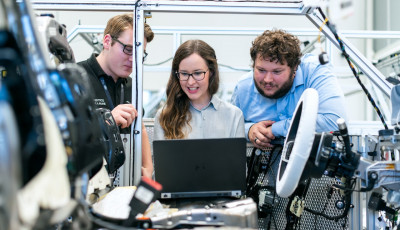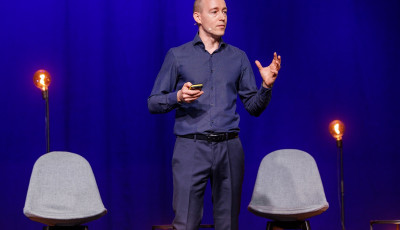Over the past year, Helmes has been working on several important solutions to increase the transparency of the tax environment and simplify the tax collection process.
Indrek Allas, the Team Lead at Helmes, said the Estonian Tax and Customs Board has been one of the key leaders in Estonian e-governance. It is considered one of the most efficient service providers globally, and a well-informed client when it comes to software development services.
“As Helmes Group has extensive experience in creating software solutions for the field of tax collection, we are pleased to participate in these projects and make the life of entrepreneurs easier while promoting cross-border trade,” Allas said.
According to the European Commission, the potential VAT gap of EU Member States in 2021 was 61 billion euros. This includes Estonia’s VAT gap, which is around 1.4% of the theoretical VAT liability, amounting to 40 million euros. Estonia has one of the narrowest VAT gaps in the European Union after Spain, Finland, and the Netherlands.
Helmes has become one of the Tax and Customs Board’s leading development partners thanks to several successful tenders. The focus is currently on various EU-wide solutions that aim to increase the transparency of the tax environment.
CECOP – creating a fairer competitive environment for e-commerce companies
Helmes developers are working on their largest project, which is the European Union (EU) Central Electronic System of Payment Information (CECOP). This project aims to reduce the tax loss arising from e-commerce in Europe and create a fairer competitive environment for e-commerce companies. Helmes is working on the local CESOP application, which payment service providers can use to submit data on recipients who have received at least 25 cross-border payments per quarter. Data must be submitted quarterly starting from 1 January 2024, and by the end of the month following each quarter.
According to Kristjan Raid, Head of Business Technology at the Tax and Customs Board, cross-border e-commerce is vital to the board, and they have high hopes for the project.
“The work of a tax authority is mainly data-driven,” Raid said. “So far, the Tax and Customs Board has lacked data to systematically identify EU or third-country traders who sell goods to Estonian end users. Therefore, it is also challenging to assess the potential tax loss.
“CESOP provides us an overview of the volume of cross-border e-commerce to Estonian end users and a tool for quicker identification of tax fraud and preventing VAT evasion,” he said.
Similar projects are also being conducted in parallel with the tax authorities of other EU countries, who use their own development partners. As a result of the project, EU tax authorities will be able to receive information about cross-border payments, the comparison of which to other European databases will give the tax authorities tools for identifying possible VAT fraud in the field of e-commerce and thereby increase the VAT revenue of the Member States in general.
“A central solution helps to identify vendors who have committed fraud, who are located in another Member State or a third country and avoid declaring the sale of goods,” Allas said.
All Tax and Customs Board projects are developed in Helmes by a special autonomous team, which co-operates closely with the client, ensuring the process is professional and efficient.
“As software developers, we aim to create user-friendly and secure software that meets the requirements and the client’s needs,” Allas said. “As a client, the Tax and Customs Board has communicated clearly and supported the development process. Trust and professionalism are key to this co-operation.”
Helmes is a digital innovation and software development company. In 32 years of operation, the Estonian company has grown into a global undertaking with more than 1,400 employees, developing business critical solutions for international organizations such as Airbus, Telia, Kühne+Nagel, CERN, the European Space Agency and OECD. Helmes’ development centers are located in Estonia, Latvia, Lithuania, and Poland.
Get in touch




